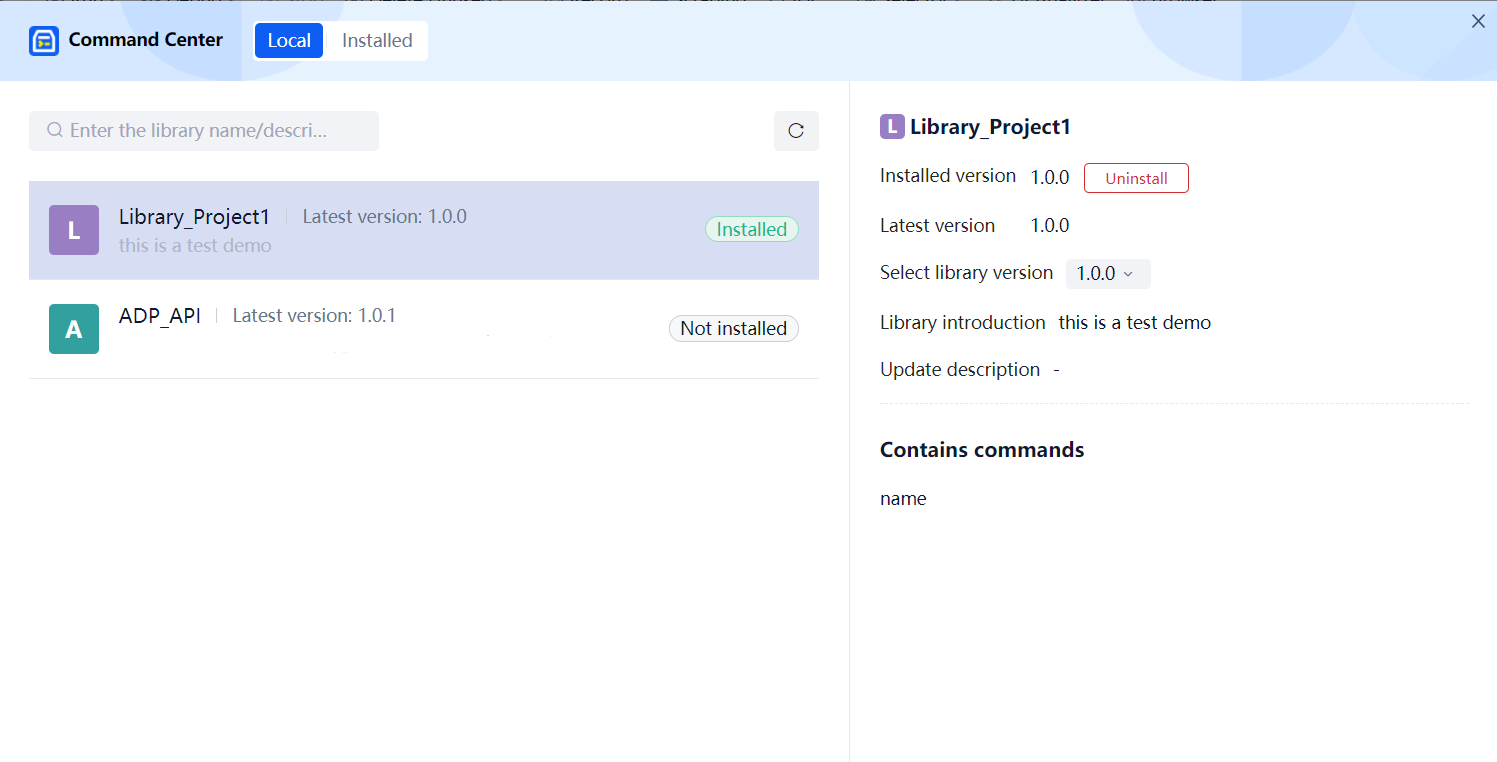Command Center
When editing a process project or a Library project, click "Get Command" in the command panel to open the new version of the command center. It supports installing or updating the Library version of the current project from the local source.
- Local source
The Library version available for installation under the current project is provided, including Library packages from three sources: Library project publishing to local, custom plug-in transferring to Library, and standard Library importing. After successful installation, it is marked as "Installed". The Library in the Local column can display basic information such as the latest version, introduction, and update description. When you select different versions of the current Library, you can view the number of commands and descriptions contained in their respective versions. Support Library developers, install and debug the Library developed by themselves in the local source in the process project, and share it with other process developers through the sharing center after verification; Or in the newly created Library project, the Library developer can build a new Library package that is easier to use in the form that the upper Library contains the lower Library package.

- Installed
The "Installed" column supports viewing the Library version successfully installed from the "Local" column in the current project (process/Library). The basic display information is consistent. When a Library version in the project has no business value or has problems, it can be uninstalled, and the related Library content will be deleted.

Users develop projects (process, Library) in the Creator. Since version 6.3.0, when the C # type Library is installed or uninstalled, it can take effect immediately, and users do not need to restart the program.
After successful installation, you can view the "Four Operations" of the installed Library in the "Extension Command" Category

Go to Developer's Guide You can learn more details.